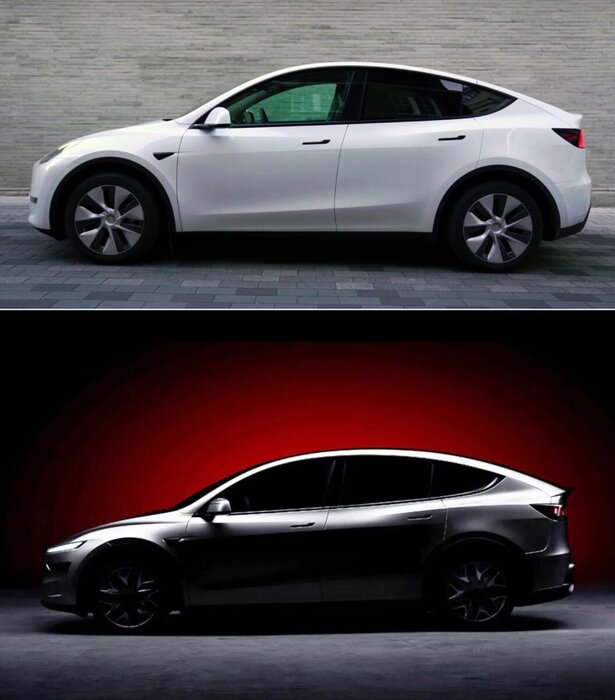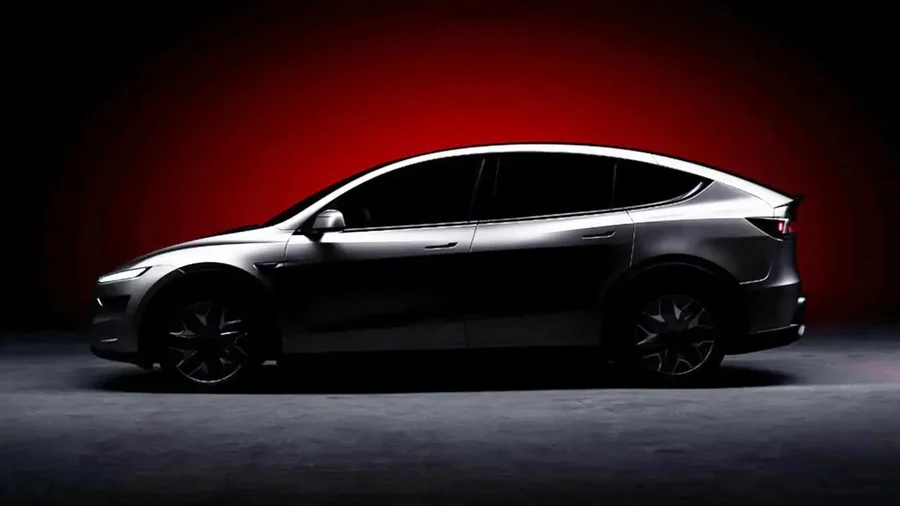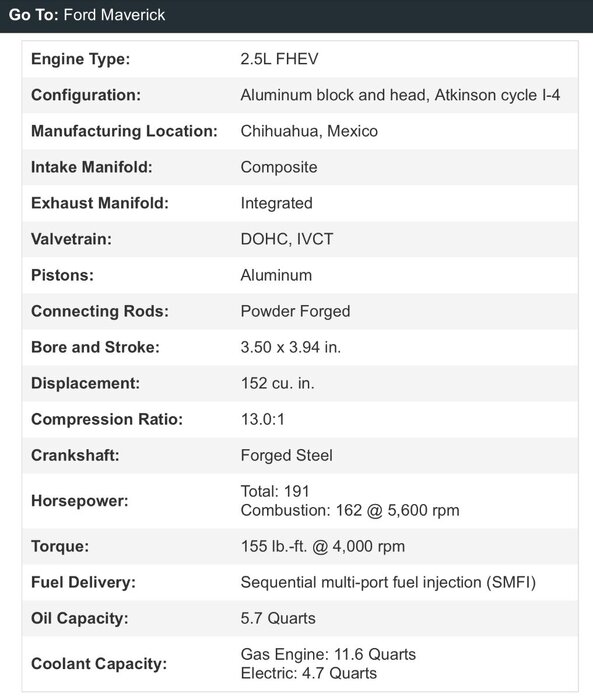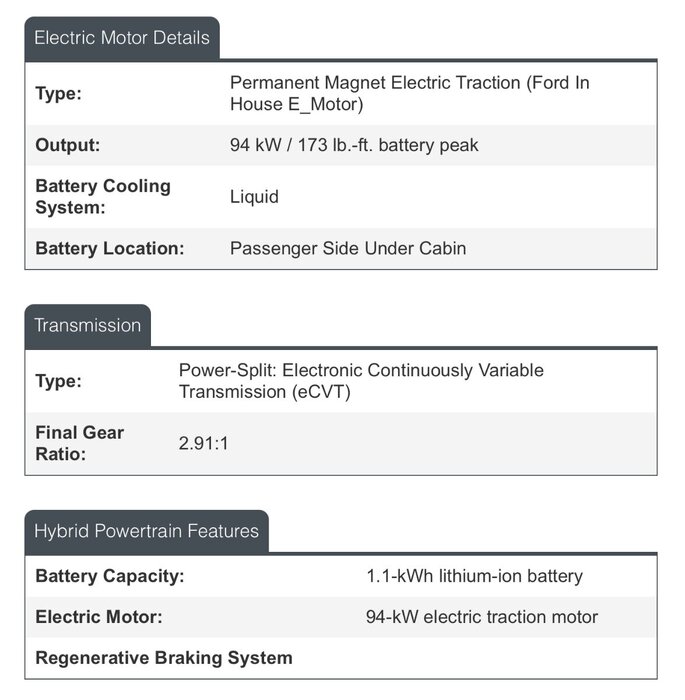
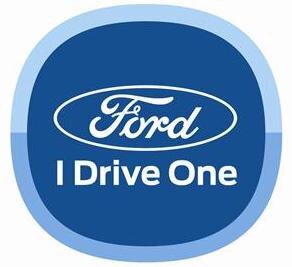
Rick73
Member-
Posts
2,066 -
Joined
-
Last visited
-
Days Won
8
Rick73 last won the day on June 16
Rick73 had the most liked content!
Recent Profile Visitors
The recent visitors block is disabled and is not being shown to other users.
Rick73's Achievements
578
Reputation
-

Trump bill removes CAFE violation fees
Rick73 replied to DeluxeStang's topic in Ford Motor Company Discussion Forum
Not going to happen but maybe should. You can’t buy a V8 Bronco but can buy a 4WD F-350 with choice of V8s. 😀 -

Ford wants to revive passenger cars
Rick73 replied to DeluxeStang's topic in Ford Motor Company Discussion Forum
Wording seems chosen very carefully to be as ambiguous as possible, as can be expected, so I wouldn’t read too much into it. “New and additional” vehicles could be as little as one new vehicle and one existing IMO. “Moderate growth” could mean more than before but not by much, and couldn’t investing together with partners refer to VW, an ongoing deal? Or could it be a new partner supplying BEVs? Sorry but don’t see much firm commitment other than Ford will continue to invest in hybrids simultaneously with BEVs, confirming near-term investment and growth won’t be solely in BEVs. To me that’s great news in that hybrids have an important role to play still for years to come. Anyway, Ford having new affordable sedans to compete with those from the many manufacturers is exciting. However it’s realistically also a crowded field so maybe we should not set bar too high. Just can’t see Ford investing heavily in multiple new vehicles all at once given competition, at least until they see things start to turn around. After BEV financial losses Ford might be a little risk adverse. -

China Throws Giant Wrench Into Ford EV Battery Plant Plans
Rick73 replied to Sherminator98's topic in E.V. Central
Yeah, never understood getting in bed with an enemy. Not sure Tesla has battery technology that can solve this problem though. Do they not also license batteries from various sources as well? AFAIK LG and Panasonic are owned by friendly countries so perhaps less of a risk? At least for now South Korea and Japan are on better terms. In any case it’s good to see Panasonic open new large plant in Kansas. Beats importing batteries from China. https://insideevs.com/news/765796/panasonic-worlds-largest-battery-plant-tesla-kansas/ -

Tesla Updates Model X & S.....Squint and you might notice
Rick73 replied to rmc523's topic in E.V. Central
Agree, Tesla has an image problem due to Musk that will limit sales until fixed. Additionally it’s also as if they have little focus on personal cars/transportation thinking that Robotaxi will be the only future. That may be correct but still decades away IMO. It’s sad because Tesla had a lot of engineering talent to take BEVs to the next level of adoption if not so obsessed with autonomous vehicles. -

Tesla Updates Model X & S.....Squint and you might notice
Rick73 replied to rmc523's topic in E.V. Central
Yeah, you’d have to be pretty short to fit back there. However, given that Model Y had an optional 3rd seat before, it would seem that between the 7” longer length and added 42 mm (~1-5/8”) of height that space at rear seats is probably much larger than before. Obviously that may not mean much if comparing to a minivan or full-size SUV, but for what is essentially a tall car with excellent aerodynamics, it may not be too much of a compromise if 3rd row is rarely used, or only for kids. What’s interesting to me and odd at same time is that roof line peaks in height over rear doors rather than over B pillars. Just looks a little out of place though it’s not unique in that sense. Regardless, if comparing profile pictures one can see that headroom at both 2nd and 3rd rows is much greater than before. I’m also curious if with added wheelbase length and overall height if Tesla will increase battery capacity significantly. -
ZF has upgraded their 8-speed for hybrid and PHEV applications with electric motor rated up to 160 kW (215 HP). One BMW SUV tested by Car and Driver had 145 kW (194 HP) electric motor augmenting the 3.0L twin turbo inline six, providing 0-60 just under 4 seconds; due largely to combined power output of 483 HP. So I’d say much higher power can definitely be done even if it requires a new or redesigned transmission. Having said that I still think a clean-sheet approach creating a RWD/longitudinal e-CVT for much larger and heavier vehicles might be a better option (except maybe for higher costs). IMO much depends on whether Ford thinks there will be high demand for hybrid, PHEV and EREV pickups in the future; and also for how long before BEVs replace them. For Ford to invest heavily there has to be demand for extended period.
-

Tesla Updates Model X & S.....Squint and you might notice
Rick73 replied to rmc523's topic in E.V. Central
Tesla will introduce a new stretched Model YL for China that may partly explain why the Model X was pulled. The longer Model YL is apparently a 6-seat SUV roughly 7 inches longer with a 6-inch longer wheelbase. It’s also a bit taller based on data being reported. https://electrek.co/2025/07/16/tesla-announces-model-yl-larger-6-seater-suv-coming-fall/ -

Ford Bronco EV/EREV for China
Rick73 replied to rmc523's topic in Ford Motor Company Discussion Forum
Best guess is that 110 kW range extender power rating refers to electrical output, not the engine itself. If so the 147 HP seems appropriate compared to regular 1.5L EB engine output. Also possible though less likely is that engine is modified to operate under Miller cycle. -

America's largest power grid is struggling to meet demand from AI
Rick73 replied to Biker16's topic in E.V. Central
Yeah, fact is that increasing demand regardless of where it comes from usually leads to higher prices, and not just for AI or BEV owners, but also for those who need electricity to keep lights on, cook, power air conditioning, etc. Problem I see is that planning on higher prices alone to limit demand may be too painful on many people because we don’t know how profitable AI may be. As example, I don’t know if electricity prices were to double, whether that would even faze them and force reductions. Since governments (controlled by voters) often have to approve rate hikes and or added capacity, it will be interesting to see how this issue plays out. In Texas the grid seems more stressed and less reliable than decades ago, though I have no data to back that up. Just opinion based on perceived numbers of outages. -
For buyers who want greater performance, Toyota offers the hybrid Corola Cross. Car and Driver tested both the ICE and Hybrid powertrains and found the 0-60 MPH acceleration time dropped nearly 2 seconds, from 9.2 to 7.3. And as expected fuel economy was improved considerably by hybrid at same time. What’s different and worth noting about Toyota Corola Cross is that fuel economy improved from 30 to 36 MPG at constant 75 MPH by going to hybrid. By comparison, the similar test of Nautilus ICE versus Hybrid resulted in identical 30 MPG at constant 75 MPH. Granted these are rough numbers based on testing only one car and rounding off results so not exact, and obviously the Lincoln is a larger and heavier vehicle that should not be compared directly to Corola Cross in any case, but C/D test data does confirm importance of both hybrid/transmission and engine contributions having a role in hybrid-vehicle optimization. At steady highway speed of 75 MPH, the Corola Cross hybrid’s Atkinson engine is almost certainly more efficient than their ICE in order to bump fuel economy from 30 to 36 MPG. By comparison the Nautilus’ use of the same engine in ICE and hybrid results in same steady 75 MPH fuel economy, as can be expected. Obviously Nautilus FE improves significantly in city cycle, but not much if at all at steady highway speed. TO BE CLEAR, ABOVE COMPARES COROLA VS COROLA, AND NAUTILUS VS NAUTILUS TO DIFFERENTIATE HYBRID DESIGNS.
-
That’s a bad example of what can be accomplished. The Ford F-150 PowerBoost HEV originally only had a 35 kW (47 HP) electric motor for electrification boost. That’s really low by modern hybrid standards, especially considering the size and weight of an F-150. It’s almost a mild hybrid (I thought Ford had upgraded electric motor but various sources still report 35 kW). The Honda Civic as example has 181 HP electric motor that exceeds the engine’s 145 HP; and that’s for a vehicle about half the weight of F-150. Toyota similarly also uses powerful electric motors. The Ford Maverick hybrid by comparison to F-150 hybrid also benefits from greater level of electrification. That’s the direction Ford should take future hybrid pickups and large hybrids. IMO a full-size hybrid pickup could easily have 300 HP or greater of electric boost. A major problem is that required investment to design and manufacture new engines and new hybrid transmissions is probably very high. Below are specs for Maverick hybrid. I could easily see Ford roughly doubling those numbers or more to end up with at least 300 HP engine plus 300 HP electric for larger pickups — provided investment wasn’t a limitation. But it is, so we may see very little in this area.
-
That’s a lot of money. A Godzilla crate engine by comparison can be purchased for +/- $8,500. You’d have to add labor of course, but shows many small engines aren’t cheap. Anyway, my limited research on cost to replace a battery pack roughly in 75 kWh range suggests it far exceeds $11k. Even the smaller battery packs used in base Nissan Leaf or BMW i3 are so expensive that if they fail after car is out of warranty (normally after 8 years) the replacement cost exceeds the car’s value. Doesn’t mean it can’t be done, but I’d have a hard time investing $15k or more on a 10-year-old Leaf that’s worth less than that. While car could be salvaged by others, the owner would likely take a huge hit having to sell for pennies on the dollar.
-
Agree with EREV functional benefits in theory but IMO it’s going to take the perfect balancing act between battery capacity and engine size in order to keep price down while still providing reasonable towing capabilities. Unfortunately every owner’s need is different so a lot of buyers won’t be happy no matter where the manufacturer draws that line. I’d personally like to see more done to improve hybrid pickups’ capabilities and efficiency, and also additional models/sizes.

